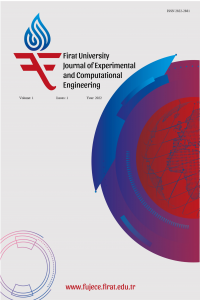Numerical determination of the production rate and cumulative production in the constant pressure outer boundary condition
Numerical determination of the production rate and cumulative production in the constant pressure outer boundary condition
Diffusivity equation, Boundary condition Cumulative production, Production rate, Finite element method.,
___
- [1] Rao SS. The Finite Element Method in Engineering, 2nd ed. Pergamon Press, Oxford, U.K. 1982.
- [2] Rao SS. Finite Element Method in Engineering. 2nd and 3rd ed. 1992.
- [3] Zienkiewicz OC. The Finite Element Method, 5th ed. (volume 1) The Basic, 2000.
- [4] Van Dyke M. Perturbation Methods in Fluid Mechanics. Academic Press, 1964.
- [5] Ahmed T and McKinney P. Advanced reservoir engineering. Gulf Professional Publishing, Oxford, 2011.
- [6] Lee WJ. Pressure transient testing part 9. Production engineering methods. In: Development Geology Reference Manual. AAPG Methods in Exploration No. 10, Tulsa, OK, 477-481, 1992.
- [7] Chakrabarty C, Ali S, Tortike W. “Analytical solutions for radial pressure distribution including the effects of the quadratic gradient term”. Water Resour Res, 29(4), 1171-1177, 1993.
- [8] Van Everdingen A. “The skin effect and its influence on the productive capacity of a well”. J Petrol Techn., 5(06), 171-176, 1953.
- [9] Barreto AB, Peres AM. “A variable-rate solution to the nonlinear diffusivity gas equation by use of green’s-function method”. SPE Journal, 145468, 2012.
- [10] Couto P, Marsili MD. “A general analytic solution for the multidimentional hydraulic diffusivity equation by integral transform technique”. Rio de Janeiro, Brazil, OTC, 29-31, 2013.
- [11] Wu YS, Li J. “A generalised framework model for the simulation of gas production in unconventional gas reservoirs”. SPE Journal, 163609, 2014.
- [12] Folade OA, Chukwunagolu VS. “Homotopy Analysis Solution to Radial Diffusivity Equation of Slightly Compressible Fluid”. Appl. Maths., 7(9), 93-1004, 2016.
- [13] Reza A, Mohamad M, Zahra S. “Parametric analysis of diffusivity equation in oil reservoirs”. J Petrol Explor Prod Technol, 6, 1-11, 2016.
- [14] Christine, AE. Well test analysis for wells produced at constant pressure. PhD thesis submitted to the Department of Petroleum Engineering and the Committee on Graduate Studies of Stanford University, 1979.
- Başlangıç: 2022
- Yayıncı: Fırat Üniversitesi
Classification of recyclable waste using deep learning architectures
Determination of water sensitivity of nanosilica added hot mix asphalt
Tacettin GEÇKİL, Ceren Beyza İNCE, Eda Tüzün ÖZPINAR
Failure mechanism of a soil slope and stabilization method: a case study
Iredia Davis ERHUNMWUN, Mohammed Idaomi SALIU, Patrick Ejebheare AMIOLEMHEN
